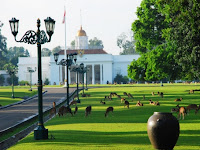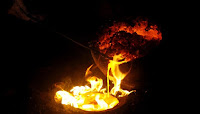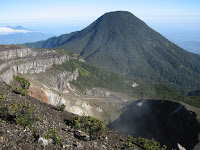Travel Tips What To Do In Tokyo
Tokyo (東京, Tōkyō) is Japan's capital and the world's most populous metropolis. It is also one of Japan's 47 prefectures, consisting of 23 central city wards and multiple cities, towns and villages west of the city center. The Izu and Ogasawara Islands are also part of Tokyo.
Prior to 1868, Tokyo was known as Edo. A small castle town in the 16th century, Edo became Japan's political center in 1603 when Tokugawa Ieyasu established his feudal government there. A few decades later, Edo had grown into one of the world's most populous cities. With the Meiji Restoration of 1868, the emperor and capital moved from Kyoto to Edo, which was renamed Tokyo ("Eastern Capital"). Large parts of Tokyo were destroyed in the Great Kanto Earthquake of 1923 and in the air raids of 1945.
Today, Tokyo offers a seemingly unlimited choice of shopping, entertainment, culture and dining to its visitors. The city's history can be appreciated in districts such as Asakusa, and in many excellent museums, historic temples and gardens. Contrary to common perception, Tokyo also offers a number of attractive green spaces in the city center and within relatively short train rides at its outskirts.
1. Akihabara
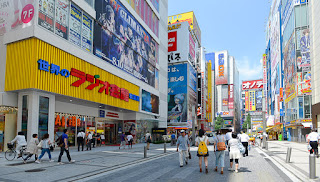 |
| Akihabara |
Hundreds of electronics shops, ranging from tiny one man stalls specializing in a particular electronic component to large electronics retailers, line the main Chuo Dori street and the crowded side streets around Akihabara. They offer everything from the newest computers, cameras, televisions, mobile phones, electronics parts and home appliances to second-hand goods and electronic junk.
A few chain stores such as Sofmap and Laox each operate multiple specialized branches along the main roads, while small independent shops can be found in the side streets. The only mega sized store is the Yodobashi Camera complex on the east side of the station.
Note that some of the electronics on sale are only intended for use in Japan due to voltage and other technical differences, Japanese language documentation and limited warranties. However, several stores also feature a selection of international models intended for overseas use, and most also offer tax free shopping to foreign tourists on purchases of over 10,000 yen (passport required).
Otaku Goods
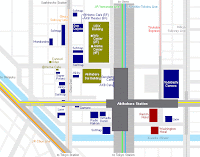 |
| Akihabara Map |
The character of Akihabara has constantly changed over the decades and continues to do so. In the last decade Akihabara has emerged as a center of Japanese otaku and anime culture, and dozens of stores specializing in anime, manga, retro video games, figurines, card games and other collectibles have filled the spaces between the electronics retailers.
In addition to shops, various other animation related establishments have become popular in the area, particularly maid cafes where waitresses dress up and act like maids or anime characters, and manga cafes (manga kissa), a type of internet cafe where customers can read comics and watch DVDs in addition to having access to the internet.
How To Get There
Akihabara Station is a busy station served by the JR Yamanote Line, JR Keihin-Tohoku Line, JR Sobu Line, the Tsukuba Express and the Hibiya Subway Line. Suehirocho Station on the Ginza Subway Line is located around the northern end of the district.
From Tokyo Station
Akihabara is two stations north of Tokyo Station by JR Yamanote or Keihin-Tohoku Line. The trip takes about three minutes and costs 140 yen. During weekday daytime, the Keihin-Tohoku Line skips the station between Tokyo and Akihabara, which shaves off a few more seconds from the travel time.
From Shinjuku Station
Take the JR Chuo Line (orange colored rapid service) from Shinjuku to Ochanomizu Station (10 minutes) and make a quick and easy transfer to the JR Sobu Line (yellow colored local service) for one more station to Akihabara (2 minutes). Alternatively, take a yellow colored train without transfer all the way from Shinjuku to Akihabara (17 minutes). The one way fare is 170 yen in either case.
2. Tsukiji Fish Market
 |
| Fish Market |
Tsukiji Market (築地市場, Tsukiji Shijō) is a large wholesale market for fish, fruits and vegetables in central Tokyo. It is the most famous of over ten wholesale markets that handle the distribution of fish, meat, produce and flowers in Tokyo. Tsukiji Market is best known as one of the world's largest fish markets, handling over 2,000 tons of marine products per day. It is scheduled to move to a new site in Toyosu in November 2016.
The sight of the many kinds of fresh fish and other seafood and the busy atmosphere of scooters, trucks, sellers and buyers hurrying around, make Tsukiji Market a major tourist attractions. In fact, the numbers of visitors have increased so much over recent years, that they have become a problem to the course of business, as the aging market's infrastructure was not anticipated to serve as a tourist spot.
Tuna Auction
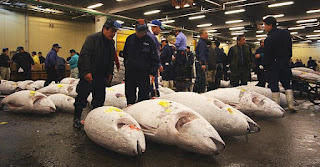 |
| Tuna Auction |
The number of visitors to the tuna auction is limited to 120 per day, the maximum number which the market's infrastructure can accommodate. Tourists, who wish to see the auction, have to apply at the Osakana Fukyu Center (Fish Information Center) at the Kachidoki Gate, starting from 5:00am on a first-come, first-serve basis (may start earlier on busy days). A first group of 60 visitors will be admitted to the auction between 5:25 and 5:50, while a second group of 60 visitors will be admitted between 5:50 and 6:15.
Visitors usually start lining up long before 5am, and the maximum number is likely to be exceeded, in which case later arriving visitors will not be able to see the auction. Successful applicants will be able to view the auction from a designated visitor area. It is not allowed to view the auction from anywhere else or to use flash photography or to interfere with the business action in any other way.
How To Get There
Tsukiji Market is just above Tsukiji Shijo Station on the Oedo Subway Line. Alternatively, it can be reached in a five minute walk from Tsukiji Station on the Hibiya Subway Line. The closest JR station is Shimbashi, from where you can walk to the market in about 15 minutes.
From Tokyo Station
Take the Marunouchi Subway Line from Tokyo to Ginza (3 minutes) and transfer to the Hibiya Subway Line to get to Tsukiji Station (3 minutes). The fare is 170 yen.
From Shinjuku Station
Take the Oedo Subway Line directly from Shinjuku Station to Tsukiji Shijo Station. The one way trip takes 20 minutes and costs 270 yen.
3. Tsukishima
 |
| Monjayaki |
Tsukishima (月島, lit. moon island) is a man made island in Tokyo Bay, just across the channel from Tsukiji fish market. It was created over 100 years ago using earth that was dredged from the bay during the construction of a shipping channel.
In the last few decades, areas of the island were redeveloped into residential high-rise complexes; however, you can still find remnants of the atmosphere of old Tokyo if you poke around the back alleys and lanes, especially around Sumiyoshi Shrine.
Tsukishima is best known for monjayaki (もんじゃ焼き), a kind of runny pancake with different ingredients, such as seafood, meat and vegetables, mixed into the batter. A large concentration of monjayaki restaurants is found along Nishinaka Street, just a few steps from Tsukishima Station.
Monjayaki, eaten straight off the grill
Tsukudajima used to be a neighboring island that has since been joined together to Tsukishima. It is the birth place of tsukudani (佃煮), small pieces of food that have been preserved by cooking in soya sauce and sweet sake. It is eaten as a topping on rice.
Any type of food can be turned into tsukudani, but typical foods include seafood such as fish and shrimp, seaweed, beef and grasshoppers. There are three shops on Tsukudajima that have survived since the Edo Period including the first ever tsukudani shop.
How to get There
Tsukishima Station is served by the Oedo and Yurakucho Subway Lines.
From Tokyo Station:
Take the JR Yamanote Line from Tokyo Station to Yurakucho (2 minutes, 140 yen) and transfer to the Yurakucho Line for Tsukishima Station (5 minutes, 170 yen).
From Shinjuku Station:
Take the Oedo Subway Line from Shinjuku in direction of Roppongi directly to Tsukishima. The one way journey takes 25 minutes and costs 270 yen.
For more information abaout Japan : howtotraveltips





